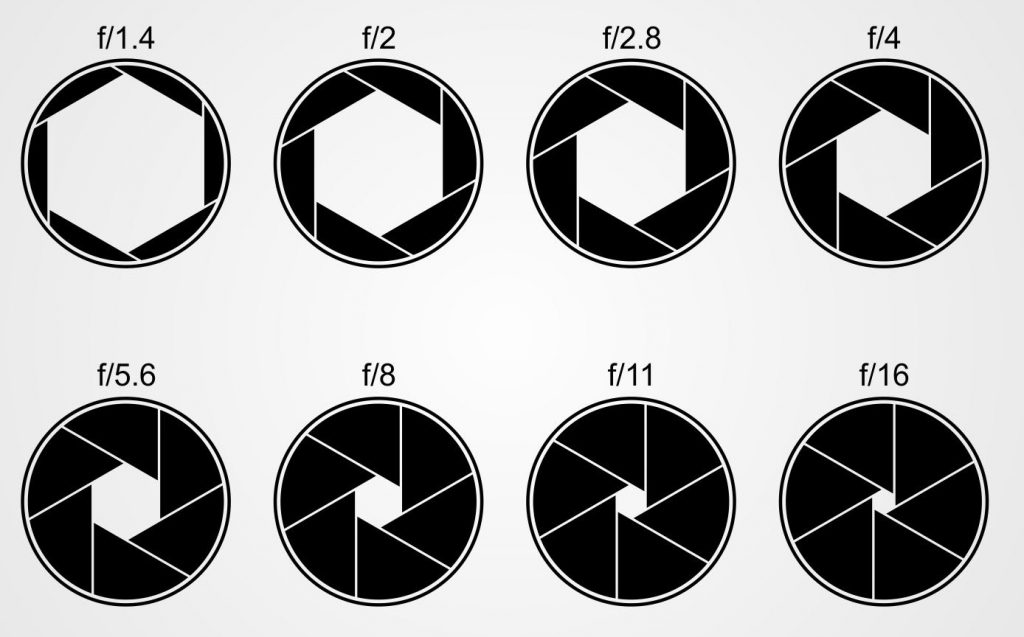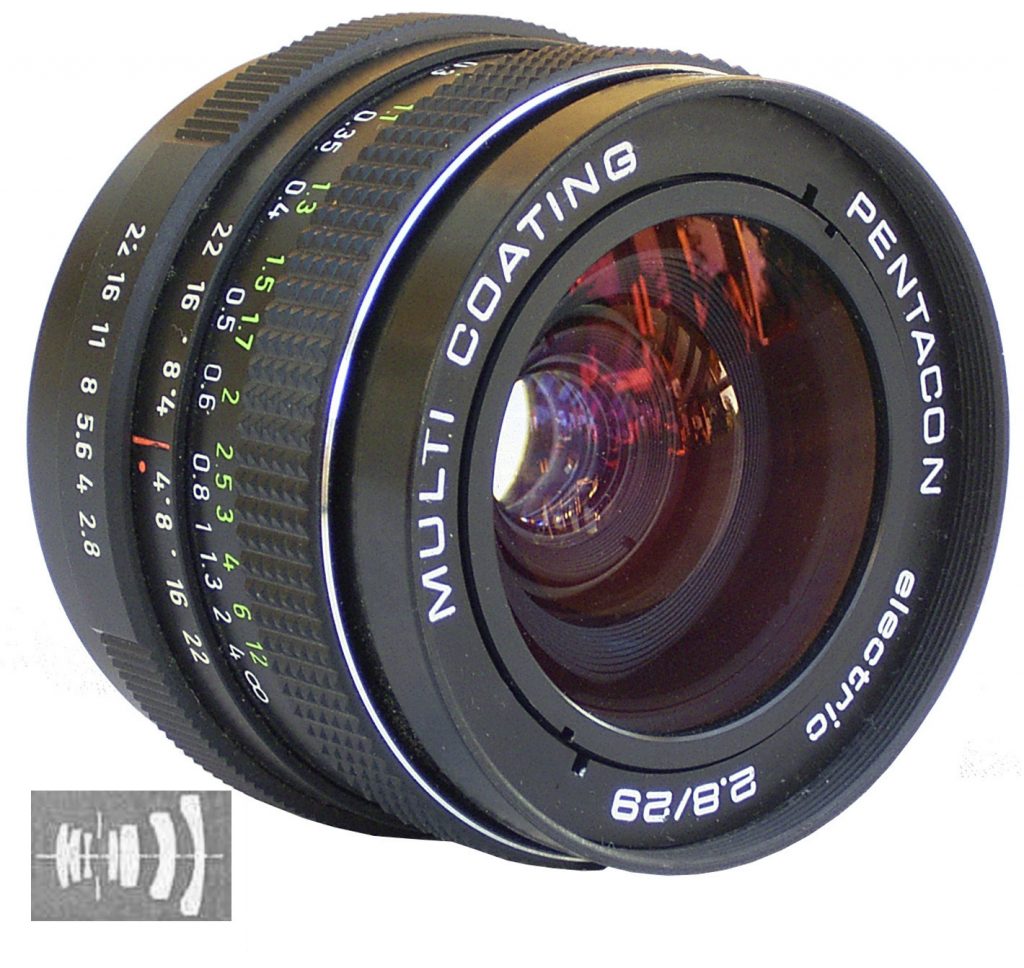What are the numbers on the Camera Lenses and what difference do they make?
A Camera Lens or a Photographic Lens is considered as the eye of the camera. It defines the quality of the images or the videos that you take from the camera. Moreover, it is also capable of making images on the photographic film or on any other media that is able to store the images chemically or electronically. You must have seen some numbers written on your camera lens. You might also find those numbers difficult to interpret. Therefore, in this article, we will explain to you the theory behind the numbers on the lenses and how do they differ.

What are the Numbers on the Lenses?
The numbers on the camera lens signify different aspects of your lens. These numbers consist of all the aspects on which you can judge the performance of the camera. Generally, they are divided into three main categories i.e. the Aperture, the Focal Length, and the Lens Diameter. The aperture of your lens tells us how much light it will allow falling on the camera’s sensor. The focal length defines the distance between your camera’s sensor and the point of convergence of your lens. Last but not least, the lens diameter is the width of your lens. Now we will see how these three differ from each other.

What Difference do they Make?
The aperture of the camera lens defines its opening. It is generally measured in f-numbers or f-stops. The range of the lens aperture lies between f/1.0 to f/22. A lower aperture number represents a wider opening of the camera lens and hence it allows more light to pass through it. The lenses with a low aperture are perfect for the images that require a blurring effect.

The focal length of your lens is the distance between the point of convergence and the camera sensor. This distance is measured in mm. The smaller this distance is, the more area you will be able to capture in an image. This is exactly why wide-angle camera lenses have a smaller focal length. This number is usually written on a camera lens next to its aperture.

The lens diameter tells how wide is your lens and it is also measured in mm. This is considered as an important aspect whenever you want to buy a lens filter or a lens cap. Because you should choose the one that best fits your lens size. The lens filters are mainly used to reduce the unnecessary glare from your images and bring in more clarity. That is why it is always good to know the lens diameter accurately.

The main difference between these three numbers can be realized from their definitions. The aperture represents the amount of light falling on the camera sensor, the focal length represents the width of the image that you can capture whereas the lens diameter is entirely related to its width. However, it is very crucial to know all these numbers before spending money on the camera. It will not only help you in spending your money in the right direction but will also ensure that you can capture great quality pictures with the help of your camera.
How Can You Choose the Best Lens for your Needs?
Now that you know what these numbers mean, how do you pick the one that best suits your needs? In order to find the best camera for your needs, you will need to learn a little about the different types of lenses and their purposes. The camera lenses are mainly divided into two types i.e. the Prime Lenses and the Zoom Lenses. We will discuss both of these lenses one by one.
- Prime Lenses: The term prime lens refers to a lens that has a fixed focal length. Because of this, this type of lens is typically less flexible. However, these lenses are very sharp and easily portable. They have a larger maximum aperture. This property makes them extremely speedy.

Prime Lens - Zoom Lenses: These lenses offer multiple focal lengths. These lenses are bigger and heavier than the prime lenses. Earlier, these lenses were considered much slower than the prime lenses but now we have some really fast, maximum aperture lenses available in the market such as the Sigma 18-35 f/1.8. This lens not only offers a varying focal length but also a greater aperture which makes it an extremely fast zoom lens. Last but not least, the flexibility of the zoom lenses is a lot more than prime lenses.

Zoom Lens
Within these two basic types, there are several other categories of lenses that are used for different purposes. We will discuss the 5 most common types of these lenses over here:
- Standard Lens: A standard lens also known as the Normal Lens is used to produce such an image that appears to be natural to the human-eye i.e. the images captured by a standard lens are very close to what we can actually see. These lenses have focal lengths ranging from 35mm to 85mm. This type of lens can be used for multiple different types of photography such as landscapes, portraits, street photography, etc.

Street Photography - Wide Angle Lens: Wide-angle lenses are typically used for capturing a larger area of an image within your frame. The focal length of this lens is smaller than that of the standard lens. It usually lies between 14mm to 35mm. However, sometimes, it can be even lesser than 14mm. This type of lens is best suited for landscapes or scenic photography.

Landscape Photography - Macro Lens: Macro lenses are the lenses that enable you to take sharp, detailed close-ups of different objects. These lenses have a typically larger focal length between 100mm to 200mm with a minimum focusing distance of 12 inches or less. That is why, if a 50mm lens has a very small minimum focusing distance, then it will also be considered as a macro lens. These lenses are extensively used for nature photography.

Nature Photography - Telephoto Lens: This type of lens is mainly used for capturing objects that lie at a moderate to a far distance. These lenses have a very unique feature that distinguishes them from the rest of the lenses i.e. the physical length of these lenses is shorter than their focal length. Their focal length lies between 100mm to 600mm. However, at times, the focal length can go even beyond 600mm. These lenses are most suitable for astronomic and sports photography.

Sports Photography - Specialty Lens: As the name implies, these types of lenses are used to produce images with more specialized effects. There are multiple lenses that fall under this category with varying focal lengths. These lenses can be used for distorting the images, making the objects within an image as smaller as toys, and for adding unique visual effects. An example of a specialty lens is the Tilt-Shift Lens. This type of lens is capable of tilting or shifting the optics with respect to the image sensor. Moreover, these lenses can also rotate in order to tilt or shift in a wide range of directions.

Image Distortion Photography
After reading these details, now you must be in a good position to decide which camera lens is the most suitable for your needs.
What if the Lens you Decide to buy does not Fit your Camera?
While deciding to buy a lens for your camera, the first thing you need to consider is the Lens Mount. A lens mount acts as an interface between the camera lens and the camera body. It is basically an opening which has a specific size. It means that the lens you wish to buy must match this size in order for it to fit in your camera. All the necessary information regarding the lens mount is usually listed in your camera lens specifications. So, there is practically no chance for you to buy the wrong lens.

However, if you still wish to get a lens that matches your requirements but it is not compatible with your camera, then you can make use of the Adapters. As the name implies, adapters are used to fit in a lens of incompatible size to a camera that would have been impossible otherwise. In order to understand the working of an adapter, you will need to learn a terminology known as the Flange Focal Distance (FFD). FFD is the distance between the edge of the lens mount and the image sensor.
Different manufacturers or different cameras use different FFD. This is why you cannot simply fit in the lens of any brand to your particular camera. This is where the adapters come into play. Adapters work in a situation where a camera lens has a longer FFD than the camera body. This scenario arises very frequently whenever you try to use a third-party lens with your specific camera. An adapter covers up the difference between these two FFDs hence making the lens and the camera fully compatible with one another.

This not only allows you to use the lens of another brand with your camera but also provides you with a proper focus. A lot of popular camera brands such as Sony, Nikon, Canon, manufacture cameras that are capable of working with third-party lenses by making use of the adapters. Therefore, if you want to increase the flexibility of your camera by using a lens of a brand other than your camera brand, then the first thing that should strike your mind is a lens adapter that can make your life very easy.
Sometimes, it is not feasible to use the lens from the same manufacturer as that of the camera because of the high price associated with it. Moreover, at times, a lack of availability of the same lens also prevents you from buying the lens of the same brand. Therefore, you are compelled to use third-party lenses with your cameras. The table given below illustrates the Camera Type, the Lens Type and the Mount Needed with them. You can have a look at this table in order to get a clear picture of which third-party lenses are compatible with which camera brand.
| Camera Type | Lens Type | Mount Needed |
| Sigma | E Mount | |
| Tamron | E Mount | |
| Tokina | E Mount | |
| Sigma | EF Mount | |
| Tamron | EF Mount | |
| Tokina | EF Mount | |
| Sigma | F Mount | |
| Tamron | F Mount | |
| Tokina | F Mount | |
| Sigma | ||
| NA | ||
| NA |
In this article, we learned about the different numbers that are engraved on a camera body and what is the basic difference between these numbers. We studied how these numbers can help us in determining the best lens for our needs and we also looked at the different types of lenses along with their use-cases. Finally, we found out what we can do if the lens of our choice does not fit our camera body and concluded the article with a brief comparison of the camera type, the lens type, and the mounts needed with them.





